News
Patek Philippe Introduces the 5204 Perpetual Calendar in Rose Gold with Slate Gray Dial
Reference 5204R-011Split-Seconds Chronograph And Perpetual Calendar
So it might be simply a dial color change but the overall effect is one that creates an altogether sportier and more vibrantly youthful version of Patek Philippe’s venerable perpetual calendar with Split Seconds chronograph the Reference 5204.
And it must be said that Patek’s use of color in its dials, expressed by the ref. 5236P In-Line Perpetual Calendar’s stunning graduated blue, the end-of-series ref. 5711 olive green and now this timepiece’s ravishing slate grey sunray. As I have a clear obsession with Patek Philippe perpetual calendar chronographs, which compelled me to write this historical retrospective I’ve always considered these watches to be emblematic of the very best in complicated watchmaking.
But when the 5004 was launched in 1994, Patek elevated this complication to realms of horological Valhalla, with the addition of a split seconds chronograph, or rattrapante. The only issue was that the base caliber of this watch, the venerable Lemania 2310 designed by Albert Gustave Pellaton and industrialized in the 40’s, was that it was never intended to be a split seconds chronograph. As explained to me by the amazing Philippe Stern, this necessitated a great deal of innovation to reverse engineer a solution to “rattrapante drag” where the amplitude of the watch would drop each time the split second brake was deployed.
Read more: Complete Guide: Patek Philippe’s Modern Chronographs
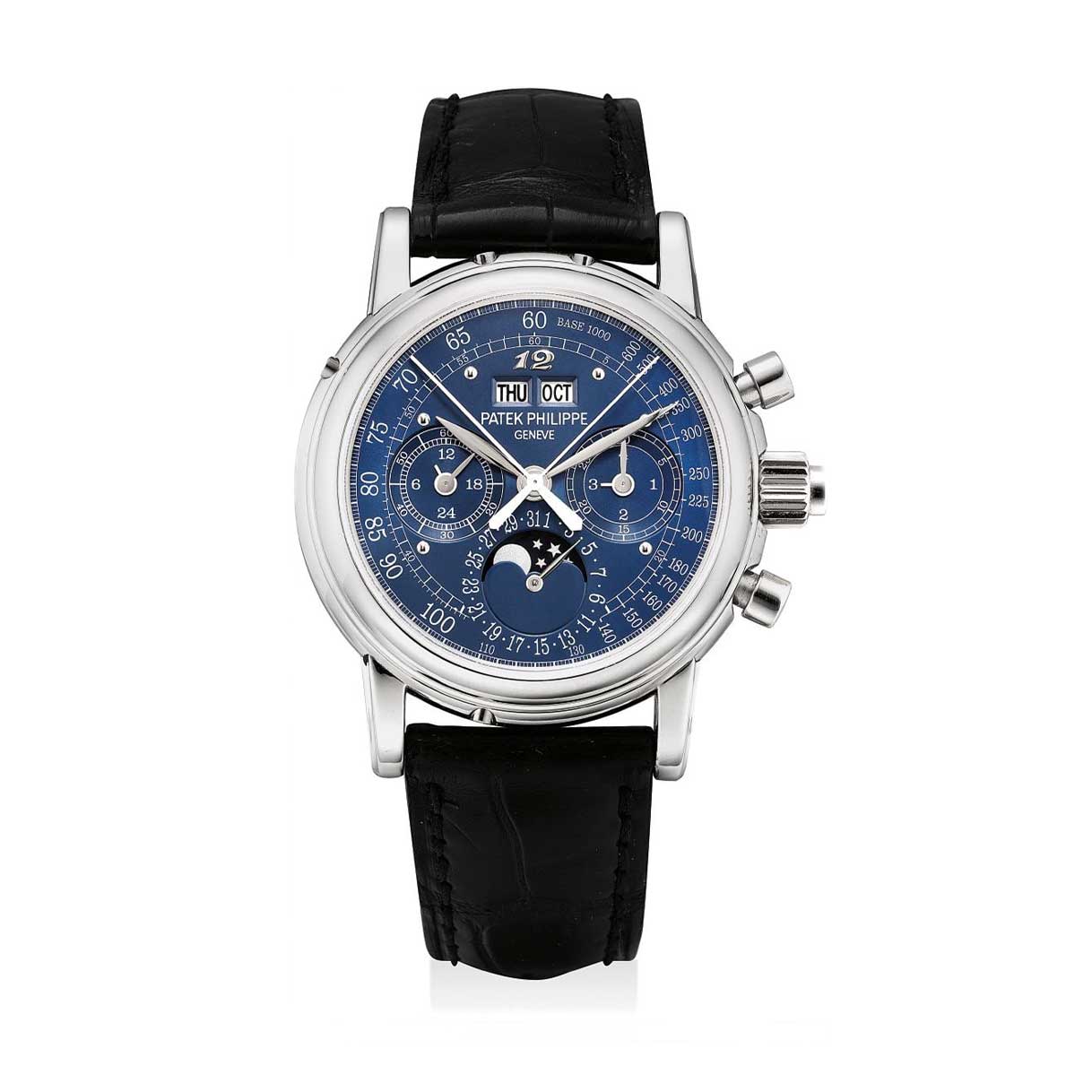
Formerly in the collection of Eric Clapton, CBE, a platinum Patek Philippe ref. 5004 perpetual calendar split seconds chronograph wristwatch with a special blue tachymetre dial and applied Breguet numeral at 12 o'clock (Image: phillips.com)
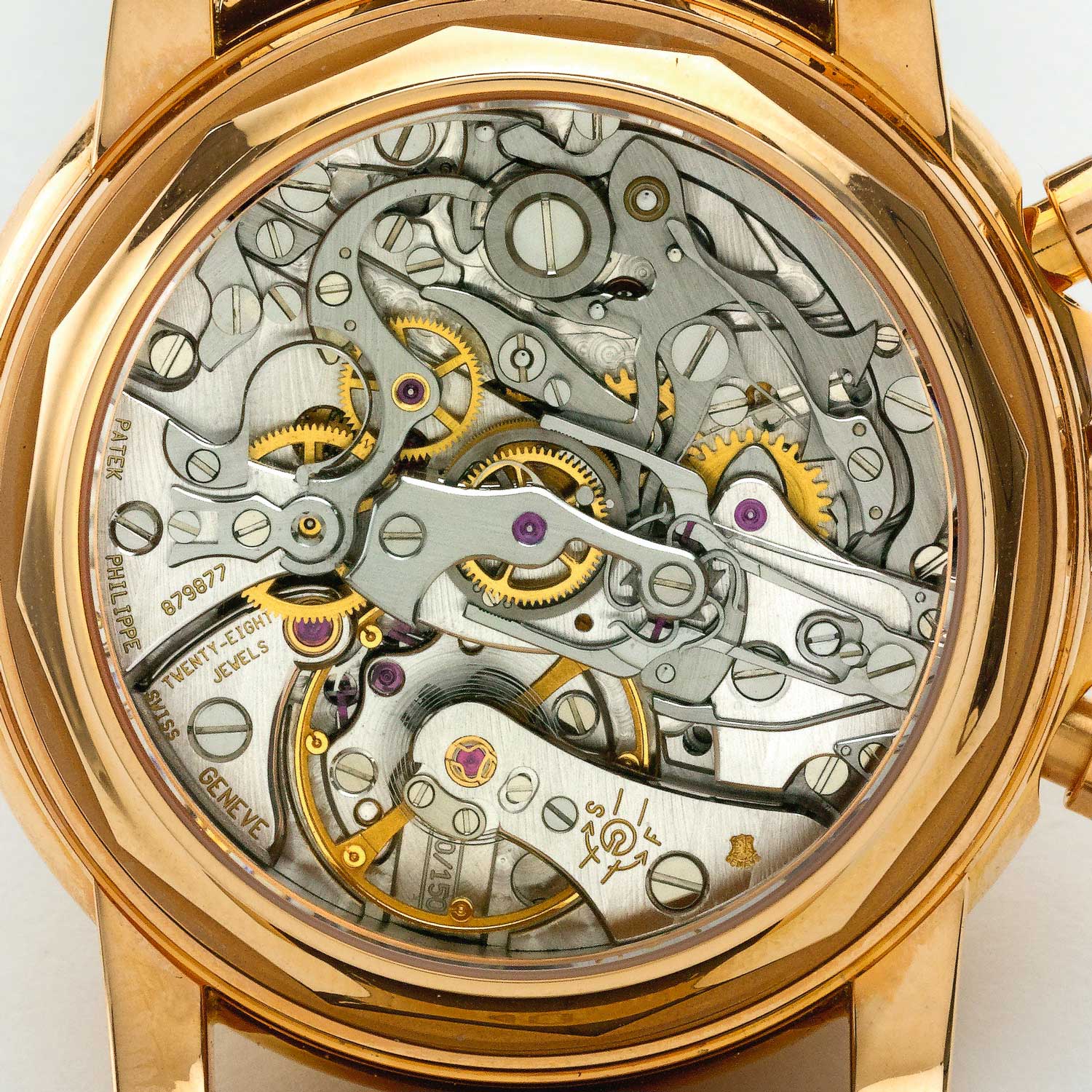
A caseback view of the Patek Philippe 5004, showcasing the Lemania-based CHR 27-70Q (Image: sothebys.com)
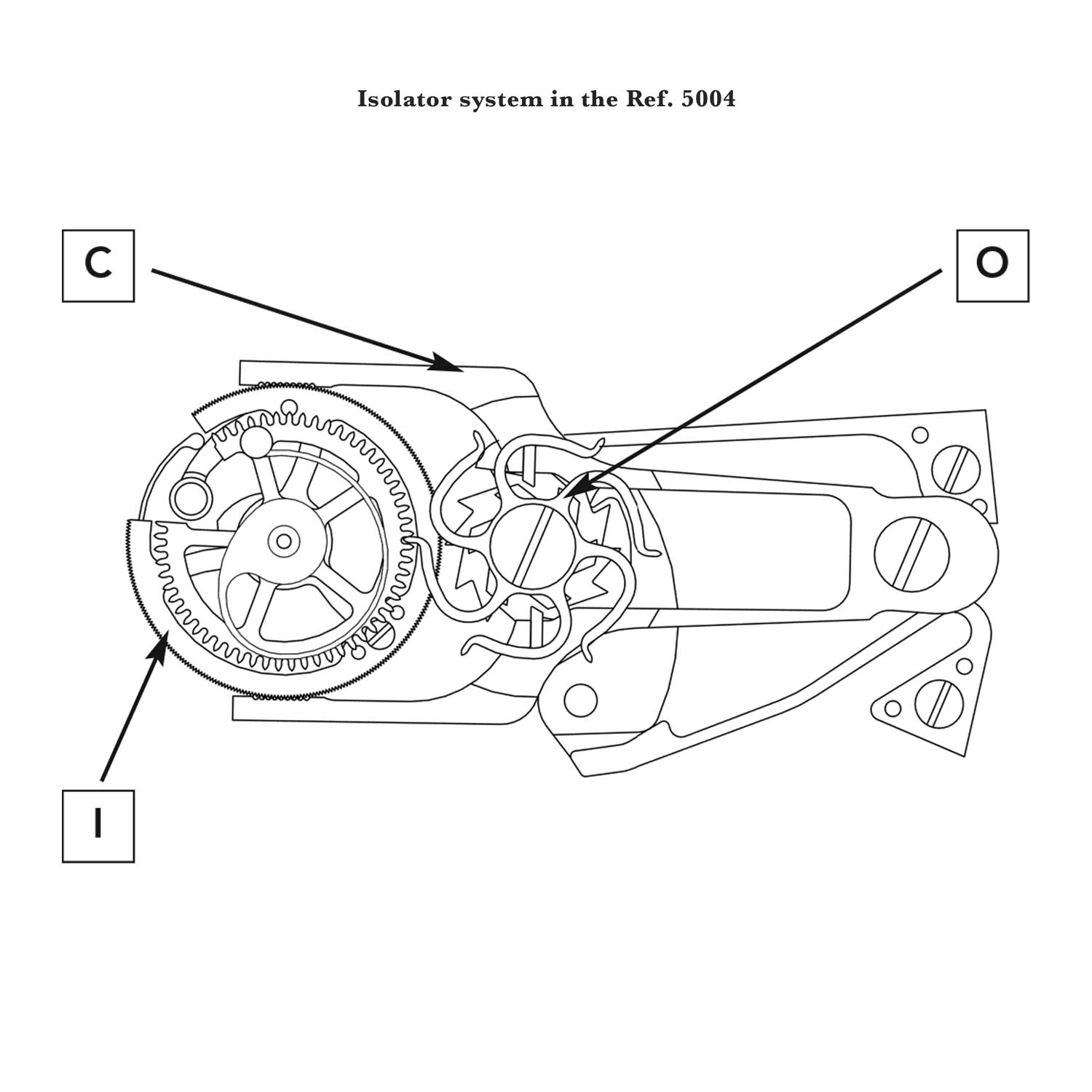
The isolator for the split-seconds lever relies on an isolator wheel that is driven by an octopus wheel (O) (isolator wheel / splitseconds spring wheel) on the split-seconds column wheel and uncouples the split-seconds lever as soon as the split-seconds clamp (C) closes. Because the octopus wheel consistently rotates in the same direction, it always has to be returned to its home position together with the split-seconds lever; this is done by the isolator wheel spring as soon as the split-seconds clamp opens again.
Launched in 2012, the 5204 perpetual calendar chronograph is replete with some very serious functional improvements to the 5004. The first is as described earlier: to overcome rattrapante drag, Patek had to create their now legendary Octopus isolator mechanism. Now it is important to understand that at the time of the 5004’s launch the Octopus was ground-breaking technology.
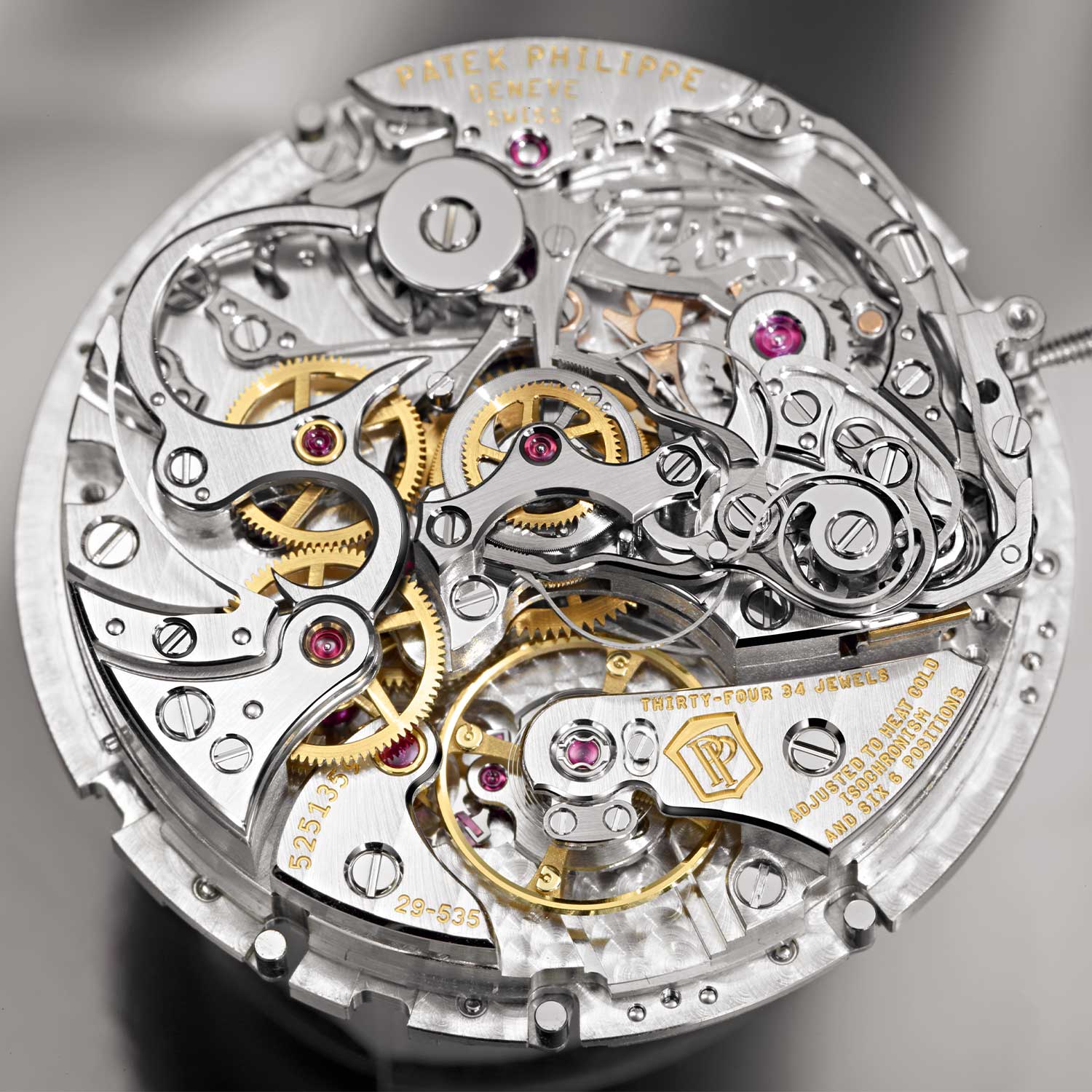
The split-second version of the CH 29-535, the CH 29-535 PS Q found in the 5204
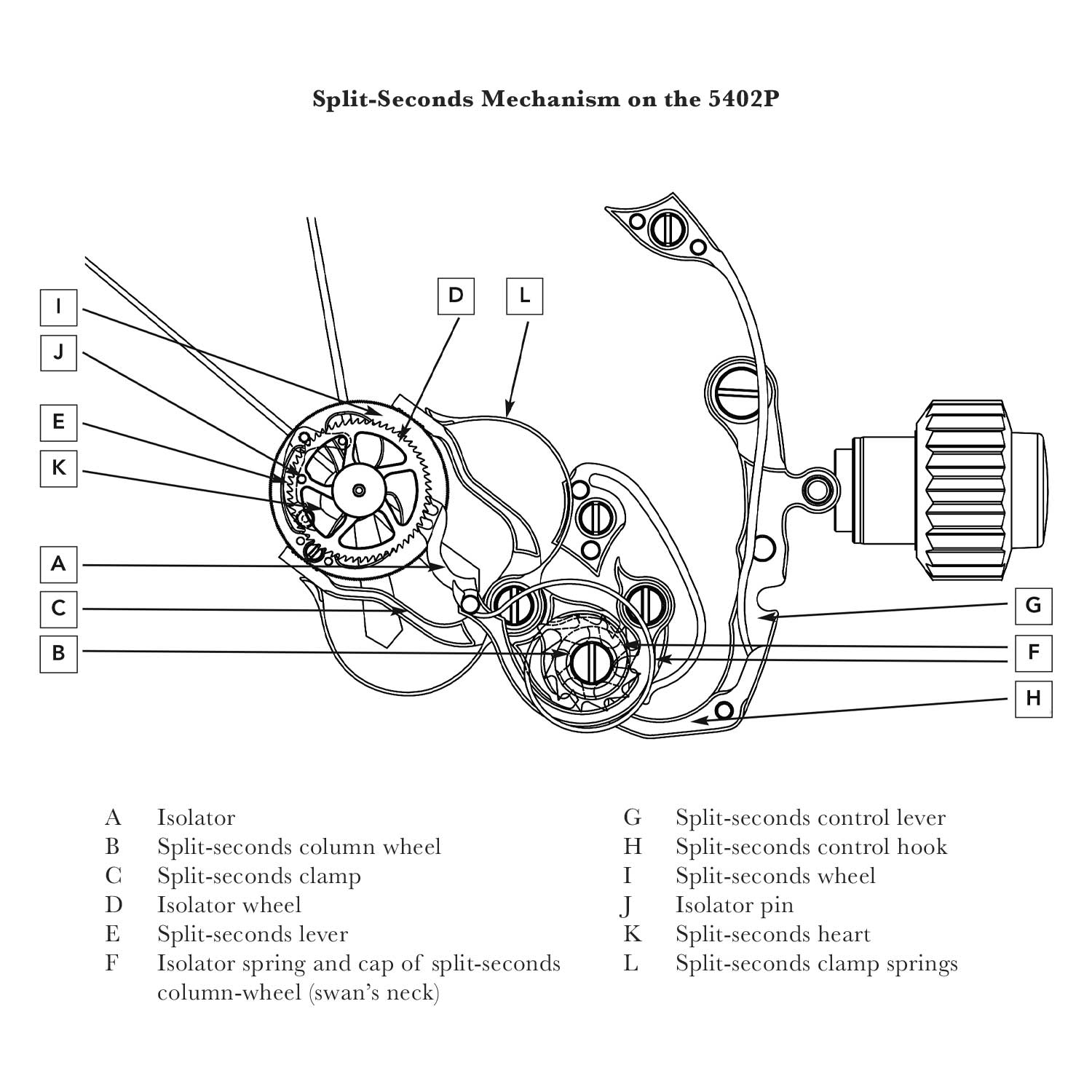
Parts of the split-seconds mechanism on the 5402's CH 29-535 PS Q
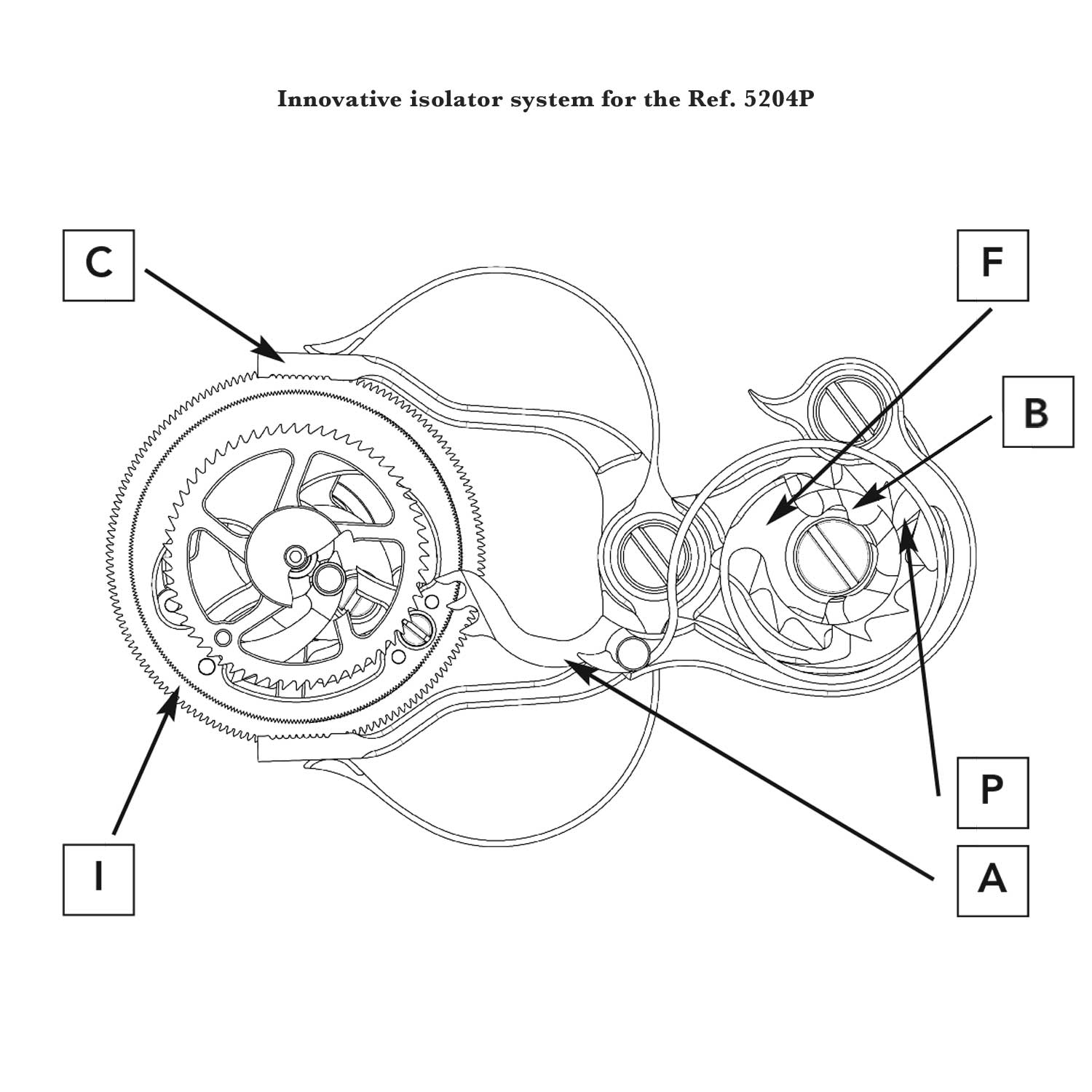
The unique Patek Philippe design is based on an isolator (A) controlled by the split-seconds column wheel (B). As soon as the split-seconds clamp (C) closes, the beak (P) of the isolator falls between two columns and with its teeth advances isolator wheel (D) that uncouples split-seconds lever. When the splitseconds clamp is opened again, the beak (P) of the isolator is lifted onto a column; its teeth turn the isolator wheel in the opposite direction and the split-seconds lever is released again. The swan’s neck cap of the column wheel doubles as a spring (F) that constantly presses the isolator (A) against the split-seconds column wheel.
Which means that it has to overcome the force of the split seconds brake spring. So when approaching the isolator mechanism of the new 5204, Patek went back to the drawing board. And the first thing they did was get rid of the isolator wheel spring mounted on the split seconds wheel. Instead they ingeniously integrated this spring as part of the split seconds column wheel cap. The second thing they did was design an isolator that can move back and forth in two directions and thus doesn’t have to overcome the force of the brake spring which is much better for long term reliability.
Six Patents for the CH 29-535 PS





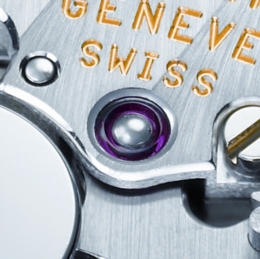

Patek Philippe Reference 5204R-011 Split-Seconds Chronograph and Perpetual Calendar in rose gold with slate gray dial

Patek Philippe Reference 5204R-011 Split-Seconds Chronograph and Perpetual Calendar in rose gold with slate gray dial
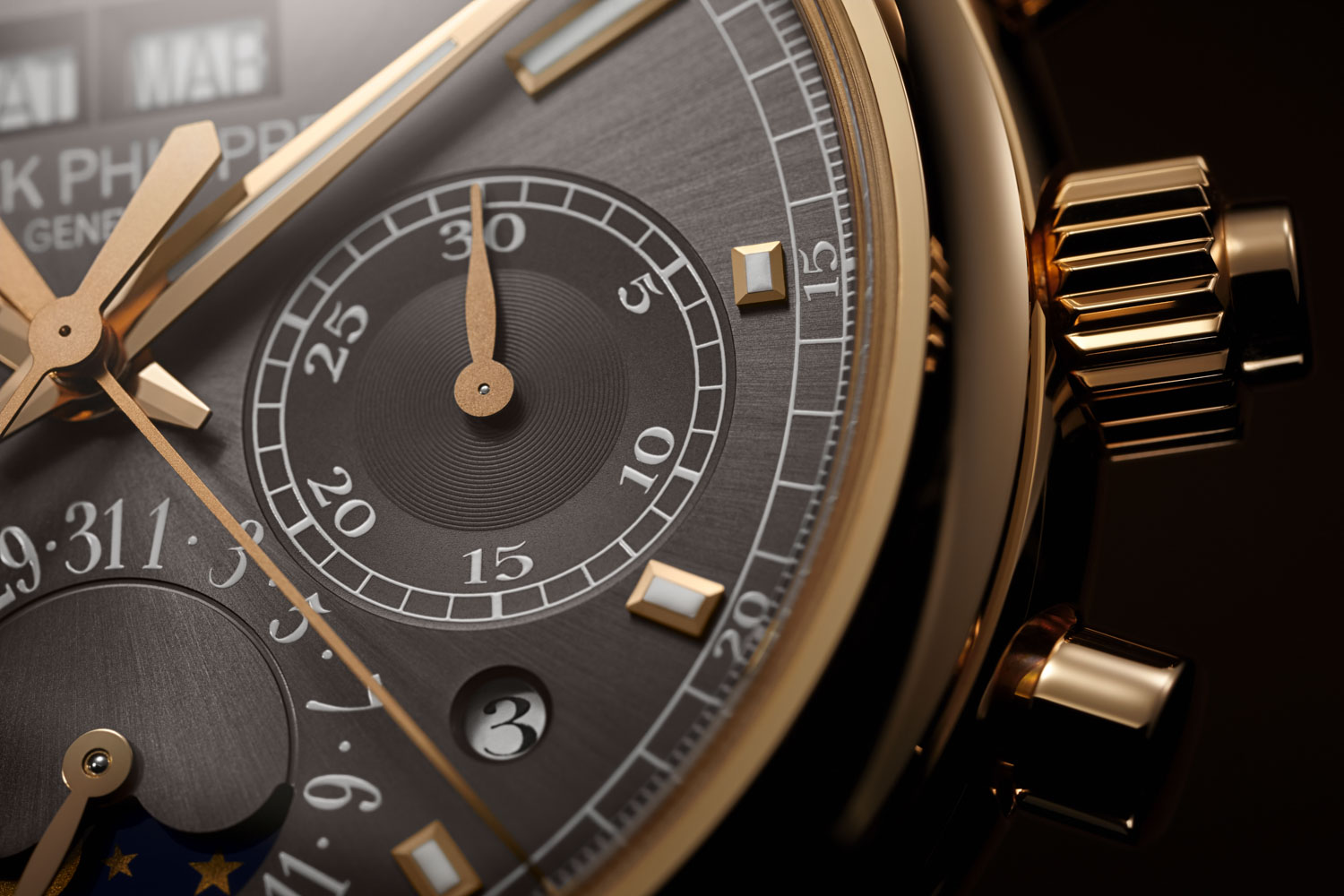
Patek Philippe Reference 5204R-011 Split-Seconds Chronograph and Perpetual Calendar in rose gold with slate gray dial
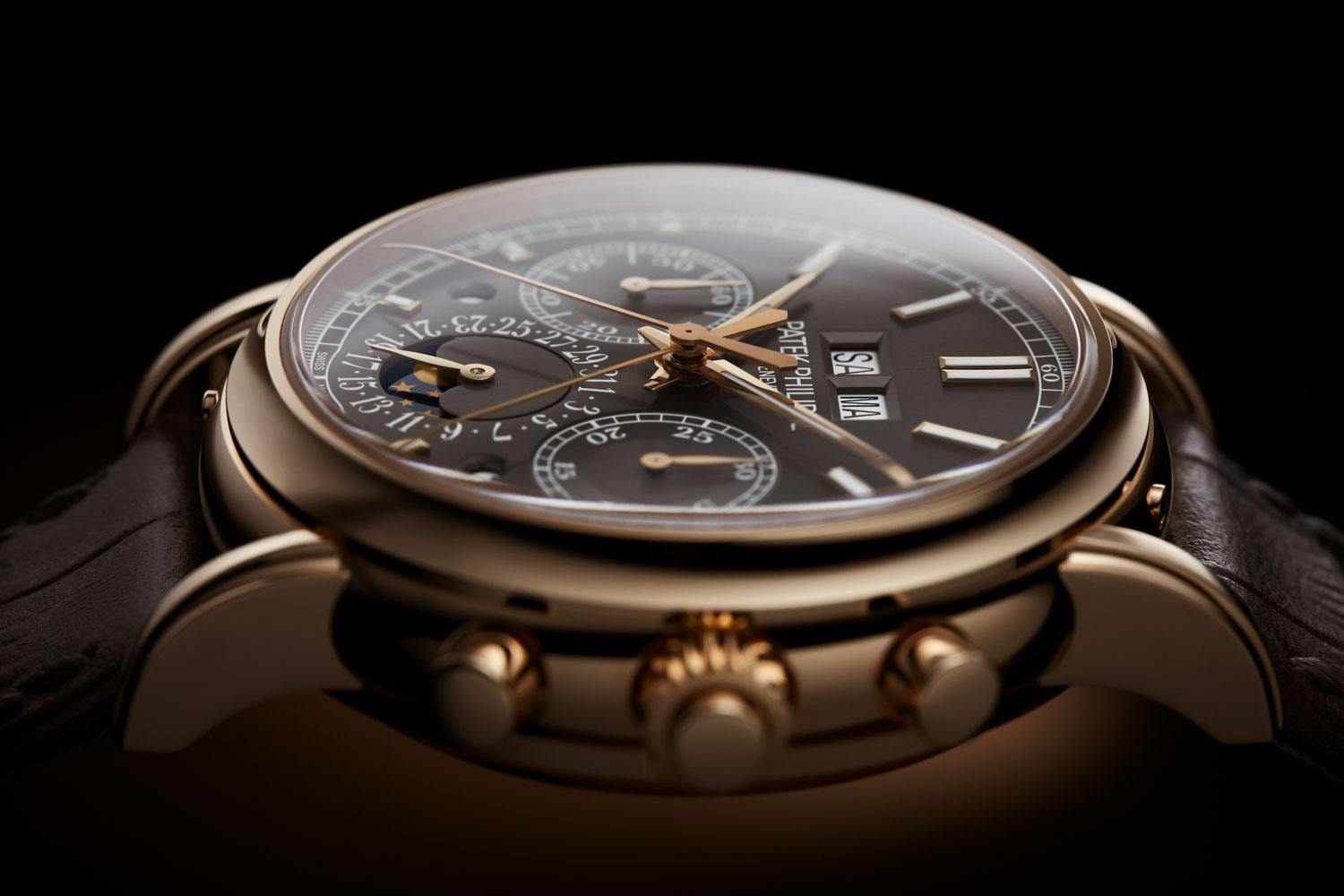
Patek Philippe Reference 5204R-011 Split-Seconds Chronograph and Perpetual Calendar in rose gold with slate gray dial

Patek Philippe Reference 5204R-011 Split-Seconds Chronograph and Perpetual Calendar in rose gold with slate gray dial

Patek Philippe Reference 5204R-011 Split-Seconds Chronograph and Perpetual Calendar in rose gold with slate gray dial
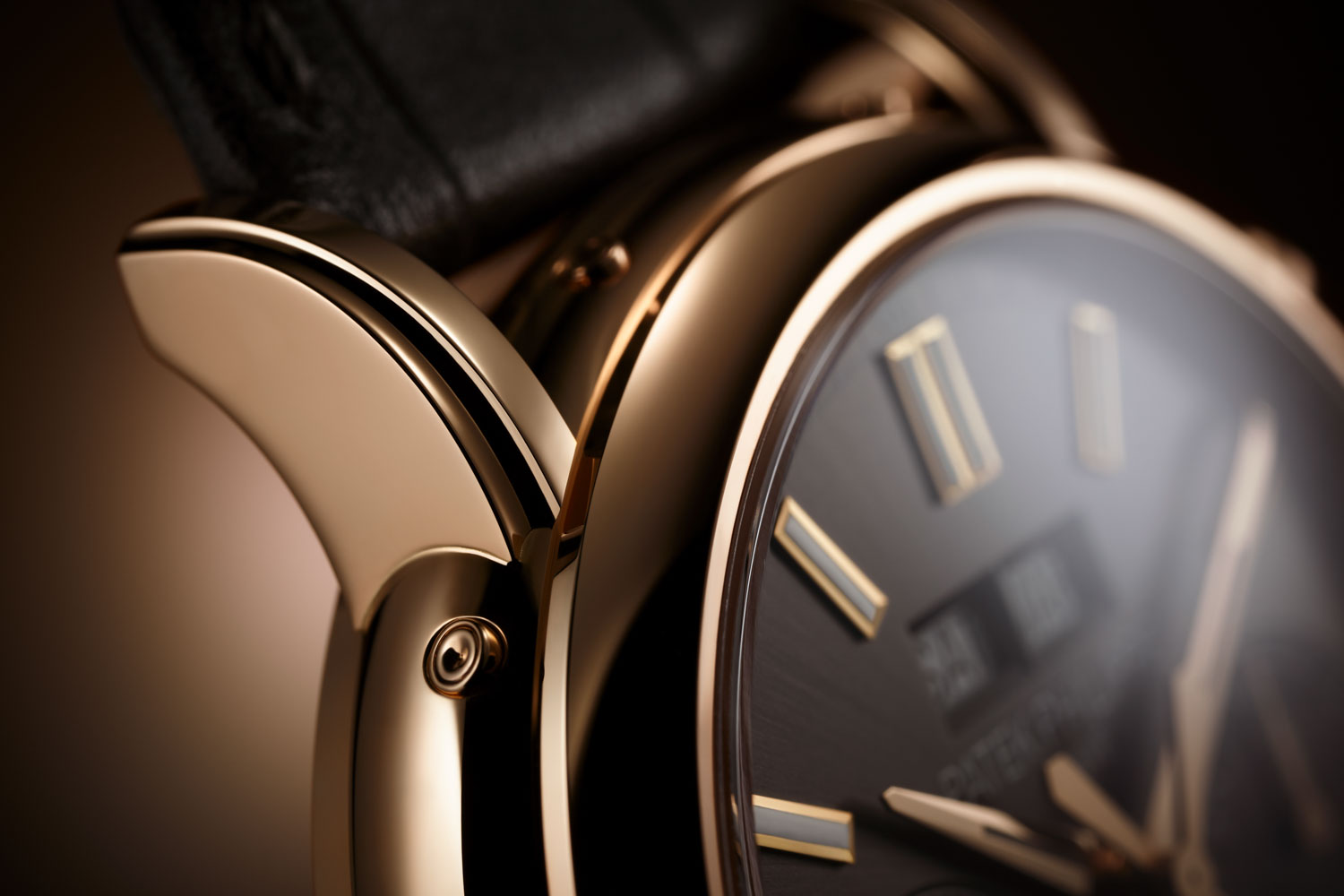
Patek Philippe Reference 5204R-011 Split-Seconds Chronograph and Perpetual Calendar in rose gold with slate gray dial
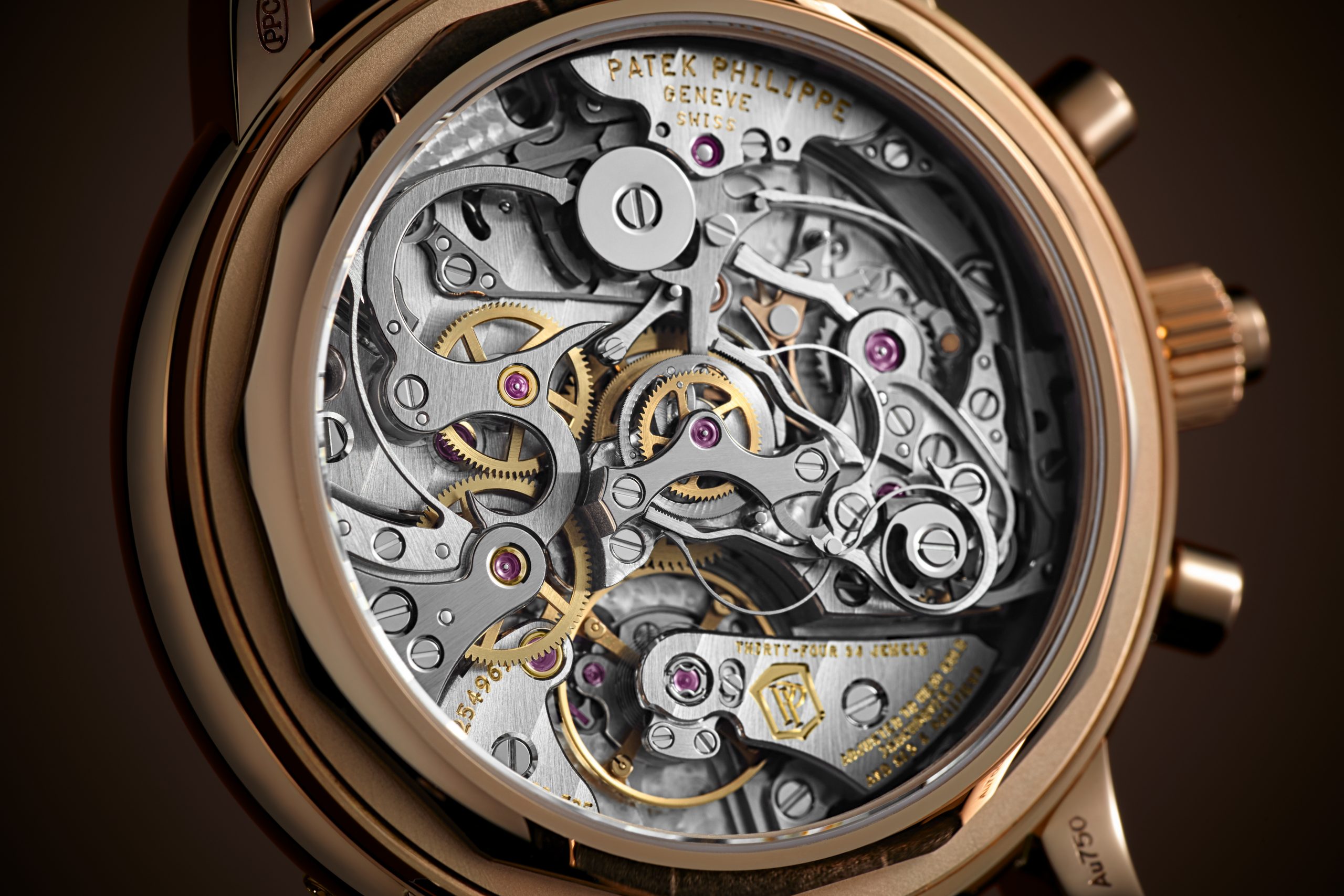
Patek Philippe, 5204R_011_DET
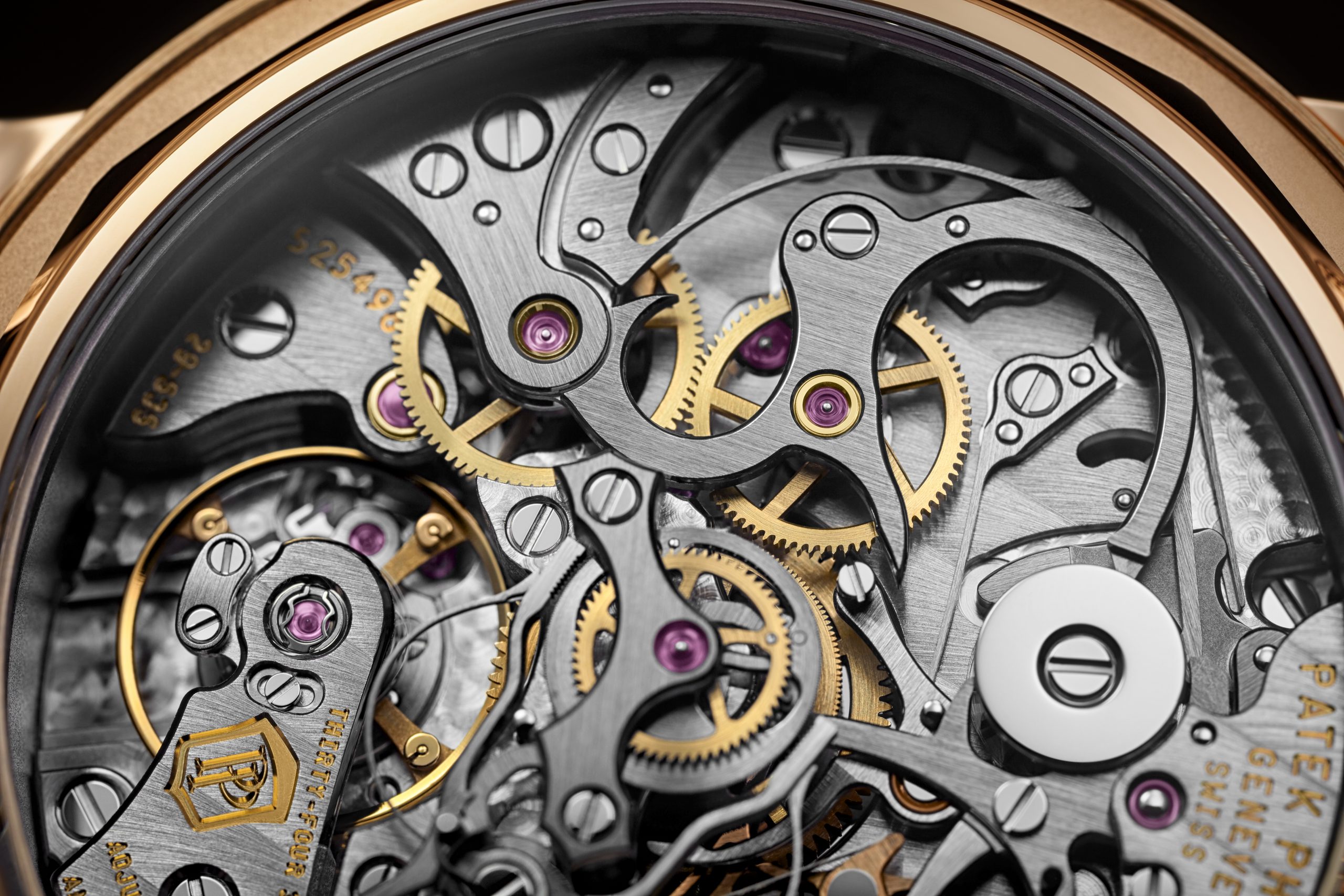
Patek Philippe, 5204R_011_DET
Tech Specs

Patek Philippe Reference 5204R-011 Split-Seconds Chronograph and Perpetual Calendar in rose gold with slate gray dial
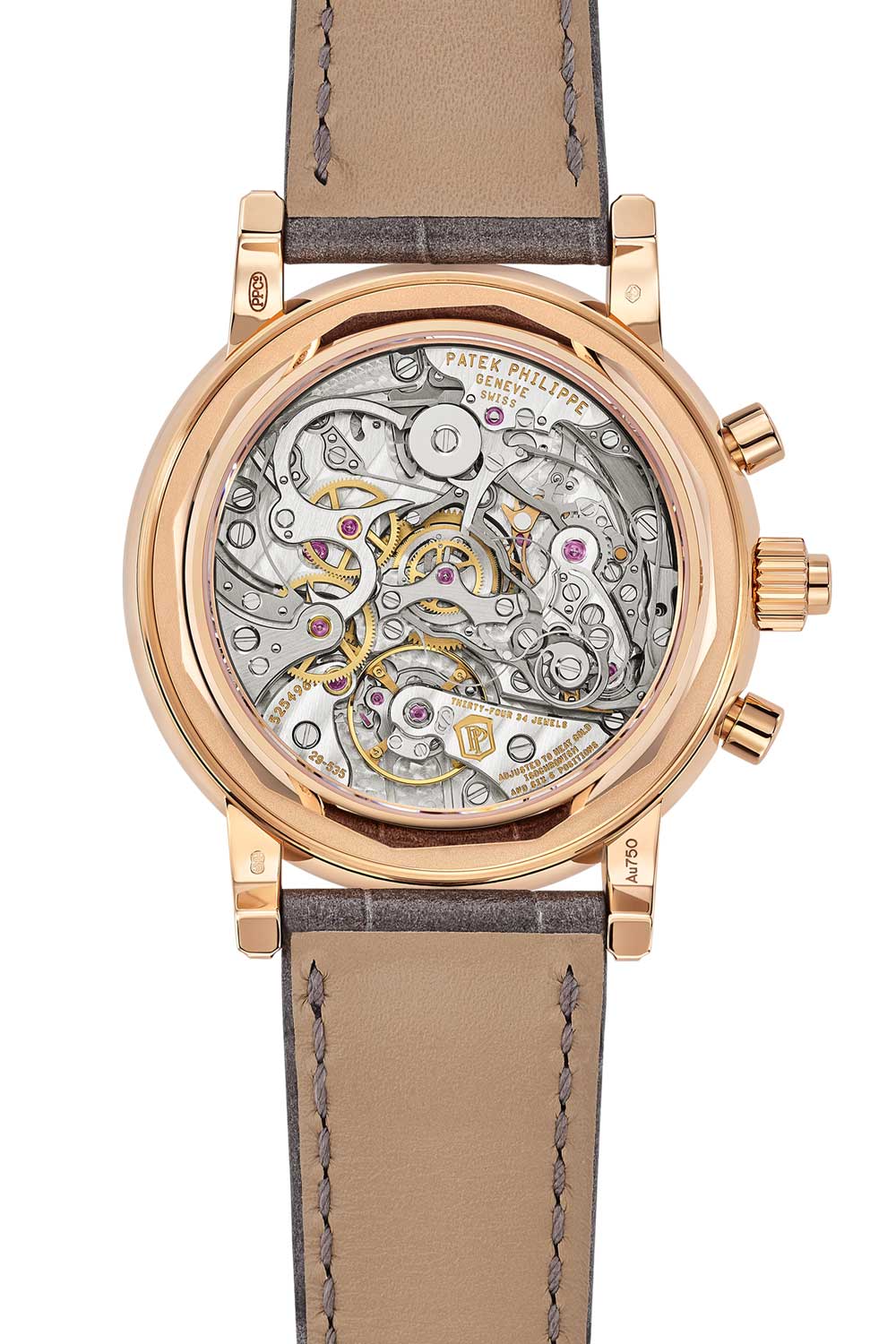
Patek Philippe Reference 5204R-011 Split-Seconds Chronograph and Perpetual Calendar in rose gold with slate gray dial
Case: Rose gold; diameter: 40 mm; height: 14.3 mm; water-resistant to 30 m; interchangeable solid and sapphire crystal case backs
Strap: Calfskin, embossed alligator pattern hand-stitched, shiny gray; fold-over clasp
Movement: Caliber CHR 29-535 PS Q; manual winding; split-seconds chronograph; instantaneous 30-minute counter; perpetual calendar; day, month, leap year and day/night indication displayed in apertures; date indicated by hand; moon phases; small seconds; diameter: 32 mm; height: 8.7 mm; number of parts: 496; frequency: 28,800 semi-oscillations/hour(4 Hz); balance: Gyromax®; balance spring: Breguet; power reserve with the chronograph disengaged: min. 55 hours – max. 65 hours
More information: patek.com










